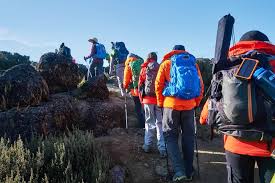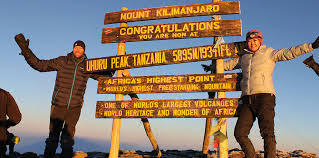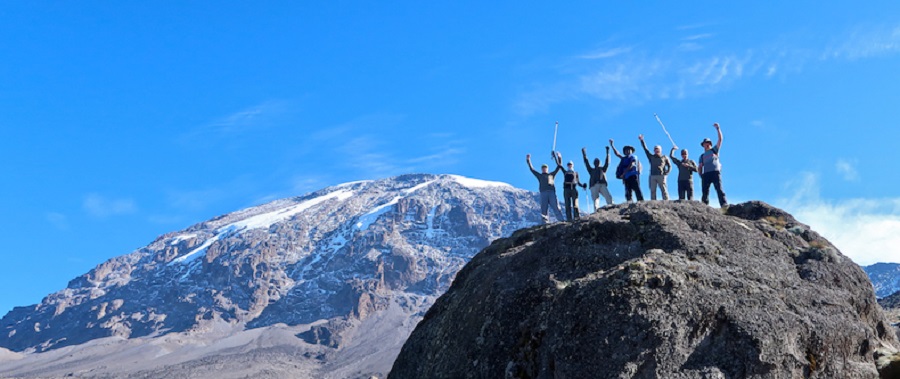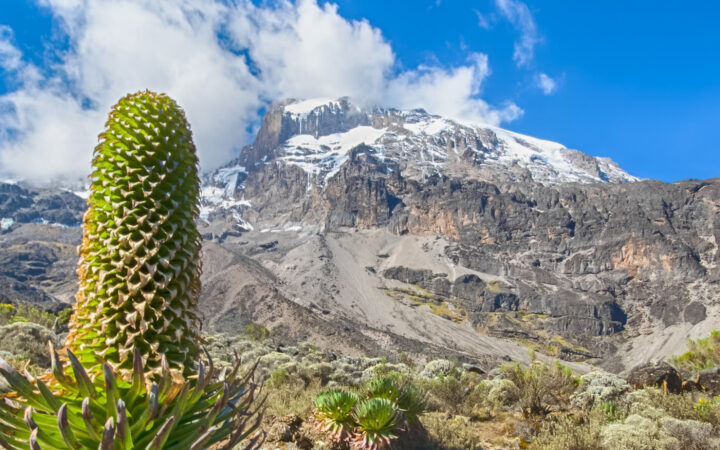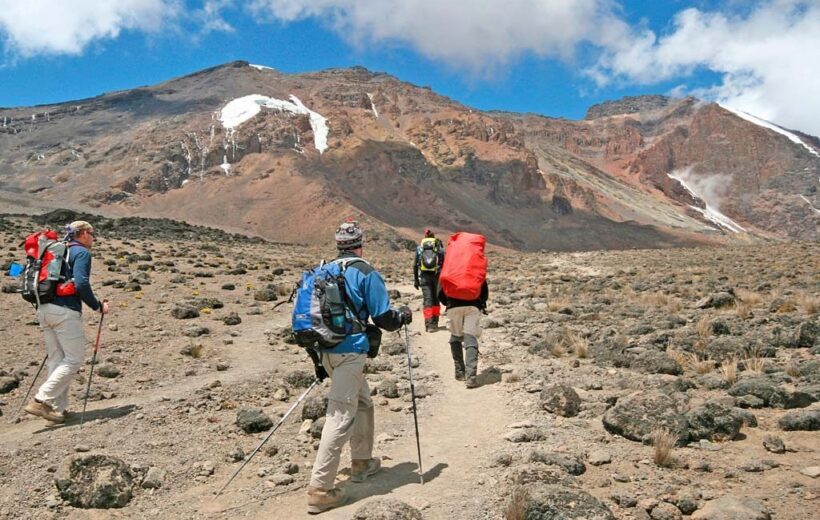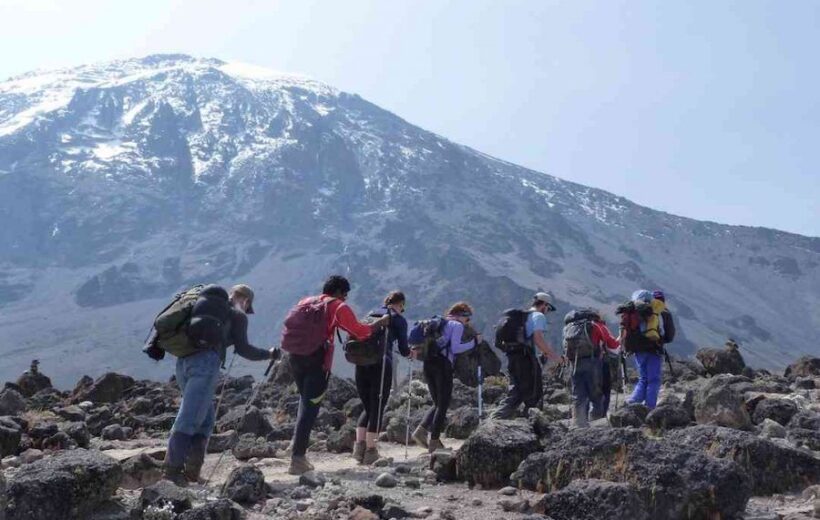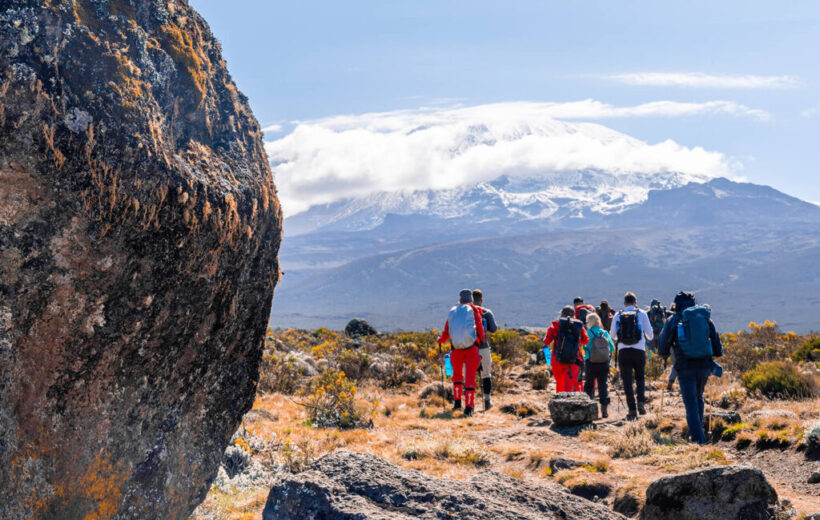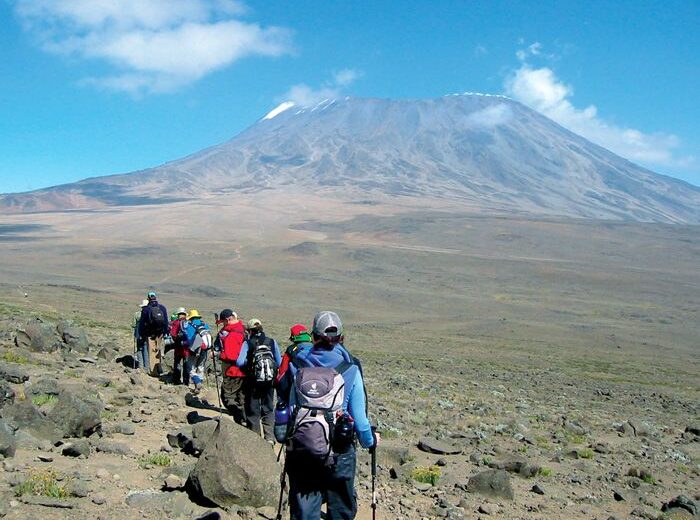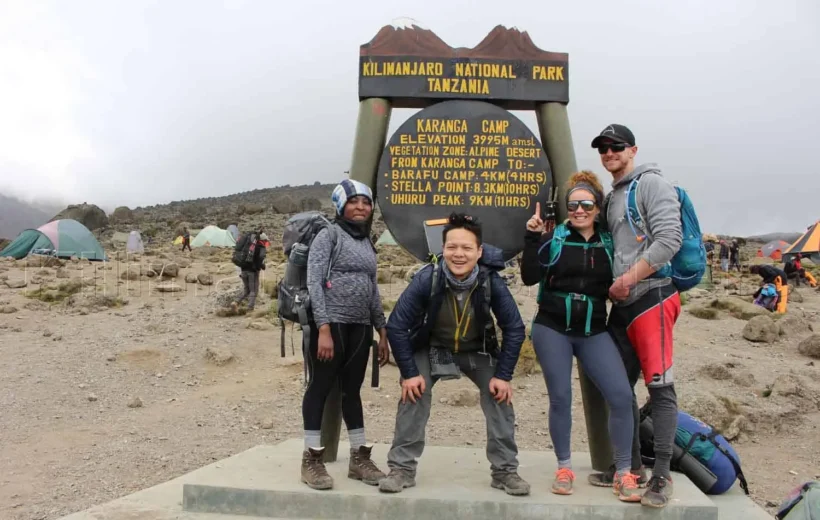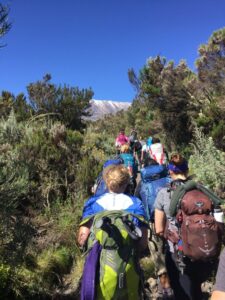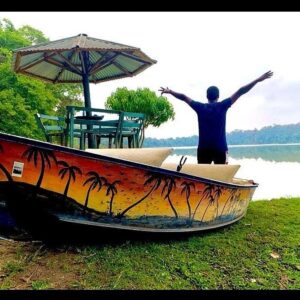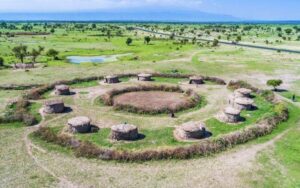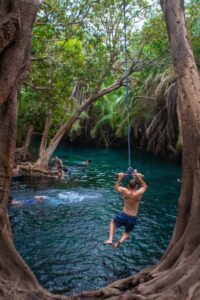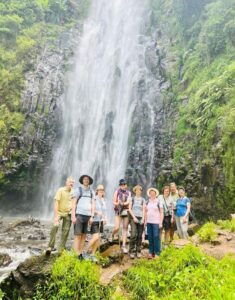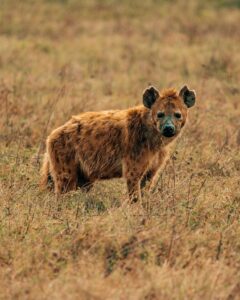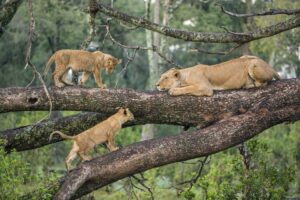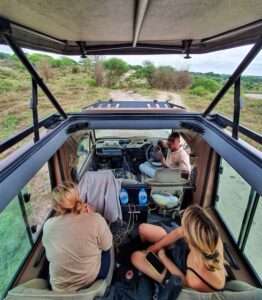8 Days Lemosho Route Trek
Price
Min Age
Duration
Max People
Overview
The 8 Days Lemosho Route Trek is the ideal Kilimanjaro climb for those seeking scenic beauty, gradual acclimatization, and a high summit success rate. Starting on the western side of Kilimanjaro, the route passes through lush rainforest, the Shira Plateau, Barranco Valley, Karanga Valley, and finally the alpine desert before reaching Uhuru Peak (5,895m). The extra day allows trekkers to acclimatize at higher altitudes, giving them a better chance to summit successfully while enjoying some of the most breathtaking landscapes on the mountain. This trek is perfect for adventurers who want safety, comfort, and stunning vistas.
For more Kilimanjaro options, check our Kilimanjaro Trekking Packages.
Highlights / Features
- Summit Uhuru Peak, Africa’s highest point
- Start on Kilimanjaro’s remote western side
- Trek across the Shira Plateau, Barranco Valley, and Karanga Valley
- Extra days for acclimatization improve summit success
- Climb the famous Barranco Wall
- Experience diverse ecosystems: rainforest, moorland, alpine desert & glaciers
- Professional guides, porters, and support team
- Camping under the stars with full equipment support
Other Important Information
- Difficulty Level: Challenging
- Best Time to Trek: January – March & June – October
- Group Size: 2–12 trekkers per guide
- Accommodation: Camping in tents (dining and sleeping)
- Fitness Requirement: Good physical fitness and prior hiking experience recommended
Route Map
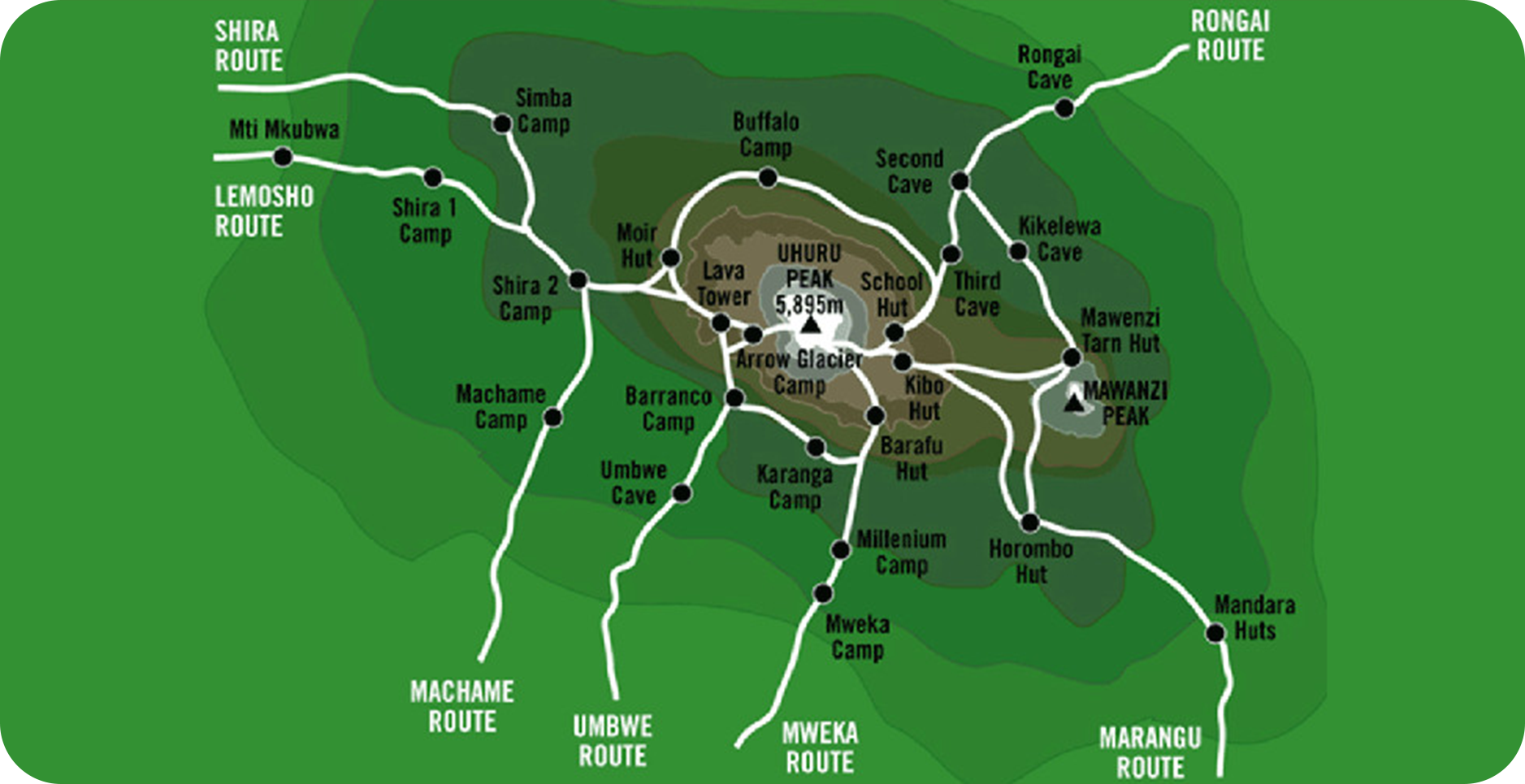
Tour Plan
Day 1: Arrival in Moshi
Altitude: 900–1,000m
Arrive at Kilimanjaro International Airport and transfer to Moshi/Arusha hotel. Meet your guide and support team for a full briefing, equipment check, and last-minute preparations. Overnight at hotel.
Day 2: Londorossi Gate (2,100m) – Mti Mkubwa Camp (2,750m)
Distance: 6 km | Duration: 3–4 hours | Elevation Gain: +650m
Drive to Londorossi Gate for registration. Begin trekking through lush rainforest filled with exotic birds and monkeys. The path is shaded and gradually uphill, providing a gentle introduction to high-altitude trekking. Overnight at Mti Mkubwa Camp.
Day 3: Mti Mkubwa Camp – Shira 1 Camp (3,500m)
Distance: 8 km | Duration: 5–6 hours | Elevation Gain: +750m
Leave the forest and enter the heath and moorland zone. Trek across rolling hills, cross streams, and enjoy panoramic views of Kibo Peak. Arrive at Shira 1 Camp for a restful overnight stay.
Day 4: Shira 1 Camp – Shira 2 Camp (3,850m)
Distance: 7 km | Duration: 3–4 hours | Elevation Gain: +350m
A short but scenic hike across the Shira Plateau, observing giant lobelias and unique alpine flora. Take time to enjoy the views of Kibo and Mount Meru in the distance. Overnight at Shira 2 Camp.
Day 5: Shira 2 Camp – Lava Tower (4,630m) – Barranco Camp (3,960m)
Distance: 10 km | Duration: 6–7 hours | Elevation Gain: +780m up, -670m down
This acclimatization day is crucial. Ascend gradually to the Lava Tower (4,630m), where you’ll have lunch and rest. Then descend into Barranco Valley, a beautiful and sheltered campsite. Overnight at Barranco Camp.
Day 6: Barranco Camp – Karanga Camp (3,995m)
Distance: 5 km | Duration: 4–5 hours | Elevation Gain: +35m
Begin the day by climbing the famous Barranco Wall, a short but thrilling scramble with spectacular views. Trek across ridges and valleys to Karanga Camp, an essential step in the acclimatization process.
Day 7: Karanga Camp – Barafu Camp (4,680m)
Distance: 4 km | Duration: 4–5 hours | Elevation Gain: +685m
Trek through alpine desert with dramatic rock formations to Barafu Camp, the final base before the summit. Rest, eat, and prepare for the midnight ascent to Uhuru Peak.
Day 8: Barafu Camp – Uhuru Peak (5,895m) – Mweka Camp (3,100m)
Distance: 17 km | Duration: 12–14 hours | Elevation Gain: +1,215m up, -2,795m down
Start around midnight for the summit push via Stella Point. Enjoy sunrise at Uhuru Peak, Africa’s highest point, then descend carefully to Mweka Camp. Celebrate the achievement with fellow trekkers.
Day 9: Mweka Camp – Mweka Gate (1,640m) – Moshi Hotel
Distance: 10 km | Duration: 3–4 hours | Elevation Loss: -1,460m
Final descent through lush rainforest to Mweka Gate. Receive your summit certificate and transfer back to Moshi hotel for rest, hot shower, and overnight stay or departure.
Included/Excluded
- Park & camping fees
- Licensed mountain guide, cook, and porters
- Meals during the trek
- Tents, dining tent, chairs, and other camping equipment
- Airport transfers
- International flights
- Travel insurance
- Sleeping bags & personal gear
- Tips for guides and porters
- Extra hotel nights before/after trek
Tour Map
Frequency Asked Questions
How high is Mount Kilimanjaro?
Do I need prior climbing experience to trek Kilimanjaro?
What is the best time to climb Kilimanjaro?
Which route is the best for climbing Kilimanjaro?
How long does it take to climb Kilimanjaro?
Depending on the route, treks range from 5 to 9 days. Longer routes provide better acclimatization and higher summit success rates.
Do I need a guide to climb Kilimanjaro?
What is altitude sickness and how can I avoid it?
Altitude sickness is caused by reduced oxygen at higher elevations. Choosing longer routes, staying hydrated, and ascending gradually help reduce the risk.
What should I pack for a Kilimanjaro climb?
How fit do I need to be to climb Kilimanjaro?
What happens after the climb?
You may like
Book This Tour
Last Minute Deals
Why You Travel with us ?
- Local Expertise
- Tailor-Made Safaris
- Unforgettable Experiences
- Professional Safari Guides
- Comfort & Safety
- Affordable Packages
- Responsible Tourism
- 24/7 Support
- Diverse Destinations
- Trusted Reputation

